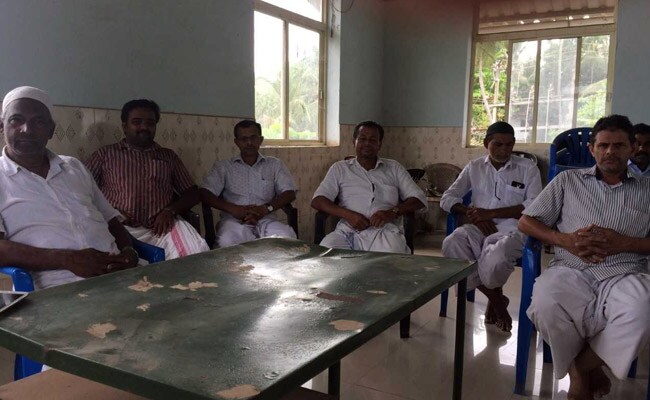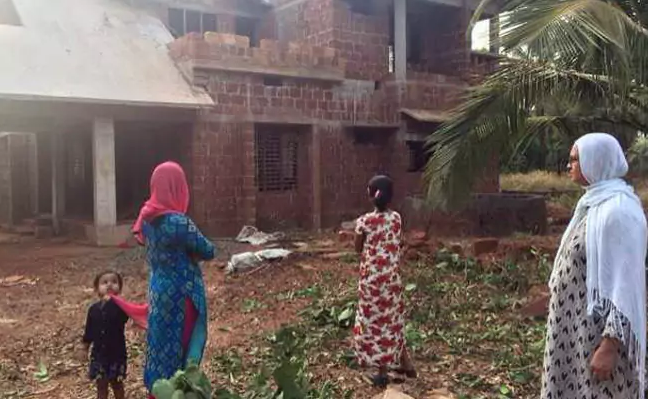Since the 1960s, remittances from the Gulf have been the backbone of Kerala’s economy, making up a third of the state’s gross domestic product, finance ministry officials said.
Every evening, three generations of worried Angatt family women meet outside a half-built bungalow in Venniyur village in Kerala.
Nearly six months after the house’s foundation was laid and its two floors raised, construction has slowed to a near halt. The reason is never discussed out loud – only whispered cautiously.
“My husband said there are problems in the Gulf. Everything is suddenly more expensive and he is not able to save as much,” murmured Faseela Angatt, 29, who is overseeing the building while her husband works in the finance department of a Dubai firm.
“The construction depends on the money he sends – and now it is a little less,” she said.
For nearly four decades, the Angatt family has prospered on “Gulf money”. Faseela’s father spent more than 30 years working there, and his son-in-law and other relatives have followed in his footsteps.
The remittances the migrants send back have built big houses across Kerala’s Malappuram district – and Faseela, whose husband has spent nine years in the Gulf, is counting on one of her own soon.
But the boom is fading. An economic slowdown in the Gulf, fluctuating oil prices and changes to labour policies mean fewer migrants are flying out of the district’s Calicut airport than before – and many are returning.
That is “adversely affecting” the flow of remittances to India, the Reserve Bank of India noted in a 2016 report.
“Unskilled workers, employed as drivers and labourers, are coming back in larger numbers,” said Amit Meena, the administrative head of Malappuram, which has an estimated 300,000 workers in the Gulf – at least one from every home.
“And back home, they are in a fix because the loan payments are mounting for the big homes they built or the cars they bought with Gulf money,” he said.

Since the 1960s, remittances from the Gulf have been the backbone of Kerala’s economy
As migration increases around the world – spurred by climate extremes, conflict and economic stresses – remittances are helping boost prosperity, from Nepal to Haiti.
But the crucial flow of cash that families and countries have come to depend on is vulnerable to everything from shifting political policy on migration to economic slowdowns.
Since the 1960s, remittances from the Gulf have been the backbone of Kerala’s economy, making up a third of the state’s gross domestic product, finance ministry officials said.
Of an estimated 6 million Indians who have migrated for employment, 2.5 million are from Kerala, most working in the six Gulf states of Bahrain, Kuwait, Qatar, Saudi Arabia, United Arab Emirates and Oman.
The fruits of their labour are visible along the roads crisscrossing Malappuram district, in the big gates and driveways that sweep into large homes with porches.
Construction consultant Babu Vahab’s office in Venniyur has stacks of home design magazines and photo albums of smart houses. In the last year, he has overseen the construction of nearly 15 projects in and around Venniyur.
“Even the most modest homes I have worked on are double-shot and have at least five bedrooms,” Vahab said, noting they cost upward of 1 million Indian rupees ($15,414).
“Families come to my office with ambitious designs, often downloaded from the internet. Irrespective of what work they do in the Gulf, their homes here will always be grand,” he said.

Of an estimated 6 million Indians who have migrated for employment, 2.5 million are from Kerala
Mohammad Ali, 52, is the proud owner of one such house. He returned to his neighbourhood of non-resident Indians in Cherumukku town last year, after working as an office boy in Dubai for 36 years.
But today he is a worried man as his cash runs short and jobs at home prove scarce.
“I built the house, married my daughters, organised a passport for one son, and all my income (has) just finished. For the last year, I have been using my meagre savings for everyday expenses,” he said, sitting outside his home.
Ali’s 21-year-old son left for the Gulf three months ago but has yet to send home any money.
“Every time he calls, he says times are tough,” Ali said.
“I understand the hardship of working there,” he added. “But I was luckier than him. I went happily, knowing I would make money if I worked hard. He has gone grudgingly and we are not sure he will earn enough.”
Many other Kerala families also say they are not receiving much cash from the Gulf these days, and are putting plans for big purchases on hold.
That has drastically reduced footfall in the glitzy furniture stores, Gulf-inspired supermarkets and hardware shops that dot the district’s highways.
In some cases, families are even sending money to the Gulf to support migrant relatives until they find jobs, Ali said.
A Kerala migration survey conducted by the Centre for Development Studies, based in the region, first spotted the dip in remittances and drop in local migrants to the Gulf in 2016.
That year, the number living there fell to 2.24 million from 2.4 million in 2014.
“Looking at the present situation, I suspect the ongoing 2018 survey will show a further decline,” said S. Irudaya Rajan, the professor who headed the survey.
Dileep Thacheru Parambil, who worked in the Gulf for 10 years and now runs the Kerala Emigrants’ Organisation, said he has had “disturbing news” almost every day in the last year.
Work permit renewal fees and taxes in the Gulf have increased, he said, and “nationalisation” policies now give preference to locals in recruitment in some places.
Meanwhile, with Saudi Arabia allowing women in the driver’s seat, Parambil fears family drivers – many of them Kerala migrants – will be axed.
Others fear cuts in hospitality industry jobs, for decades dominated by Indian workers.
“Last week, in Jeddah, nearly 4,000 Indian families have put in requests to pull their children out of school” rather than re-enroll them for the next school year, he told the Thomson Reuters Foundation at his office.
“It’s a sign that things are not okay,” he said. “And here we can see the immediate impact with car sales down, land sales down, and construction coming to a virtual standstill.”
In an adjoining building, a bank manager, who asked not to be named, said Gulf remittances had dropped by at least 15 percent in the last year, with rising cases of loan defaults.
M. Gopa Kumar, a spokesman for the state’s finance ministry, agreed the Gulf downturn was causing concern at home.
“Spending has definitely dropped, indicating that people are saving because of the uncertainty in the Gulf,” he said.
Return migration is also becoming a major issue as the agriculture sector cannot absorb those coming back, while further urbanisation or construction in the state is becoming “ecologically unviable”, he said.
The government has begun putting in place a plan to help returning migrants by allowing some to enroll in local pension schemes and helping anxious families find new ways to earn a living.
But some returnees say they feel “abandoned”.
“We are back home, but don’t feel like we belong here,” said Saidalavi Thottungal, who spent 35 years in the Gulf and whose son has spent the last three months job-hunting there.
“The homes we built with our toil are grand. But inside these homes, all is not well. We suddenly have no income and we don’t know how to restart our lives.”





























